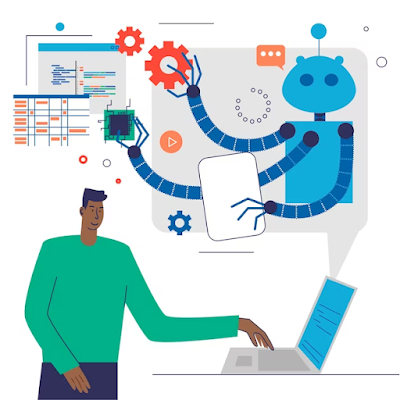Machine learning development has become a cornerstone of modern technological advancements. From virtual assistants to recommendation systems and self-driving cars, machine learning is at the heart of these innovations. But what goes on behind the scenes? In this article, we will delve into the life cycle of a machine learning project and uncover the key stages that drive the development of these cutting-edge applications.
Machine Learning Project life cycle in details
Inception
At the heart of every machine learning project is a spark of creativity and problem-solving. The inception stage is where it all begins. Here are the key aspects:
Idea Generation
The process starts with brainstorming and idea generation. This is where experts and stakeholders identify a problem that can be solved or improved using machine learning algorithms. The focus is on defining a clear problem statement and understanding the goals of the project.
Feasibility Study
Once the problem is defined, a feasibility study is conducted to assess whether machine learning is the right approach. Factors such as data availability, resources, and time constraints are considered to determine the project's viability.
Project Planning
With a solid idea and a green light from the feasibility study, it's time to create a detailed project plan. This plan outlines the scope, timeline, and budget of the project. It also identifies the team members and their roles in the development process.
Data Collection
With a clear plan in place, the next critical stage is data collection. High-quality data is the foundation of any successful machine-learning project. Here's what happens:
Data Sourcing
Data can come from various sources, including databases, sensors, and web scraping. It's essential to gather a diverse and representative dataset to train the machine learning models effectively. For example, in a medical diagnosis project, data may be collected from patient records, lab results, and medical imaging.
Data Preprocessing
Raw data often requires cleaning and preprocessing to remove outliers, handle missing values, and ensure consistency. This step is crucial for the accuracy of the models. Data preprocessing techniques include data normalization, feature engineering, and data augmentation.
Model Development
Once the data is ready, it's time to dive into model development. This stage is where the machine-learning magic happens:
Algorithm Selection
Choosing the right machine-learning algorithm depends on the nature of the problem. Options range from classic regression and classification to more advanced techniques like deep learning and reinforcement learning. For instance, in a natural language processing project, algorithms like LSTM (Long Short-Term Memory) or Transformer models may be employed.
Training and Testing
The selected algorithm is trained on the dataset, and its performance is evaluated through testing. This iterative process continues until the model achieves the desired level of accuracy. Training a model involves adjusting its parameters to minimize error and improve predictions.
Model Evaluation
Once a model is trained, it's crucial to evaluate its performance using appropriate metrics. For instance, in a fraud detection system, the model's performance may be assessed using metrics like precision, recall, and the F1 score.
Evaluation and Validation
Before deploying the model in real-world applications, it must undergo rigorous evaluation and validation:
Performance Metrics
Metrics like accuracy, precision, recall, and F1-score are used to assess the model's performance. The choice of metrics depends on the specific problem and its requirements. In a recommendation system, user engagement metrics such as click-through rate (CTR) and conversion rate may be more relevant.
Cross-Validation
Cross-validation techniques ensure that the model generalizes well to new, unseen data, reducing the risk of overfitting. Techniques like k-fold cross-validation help estimate a model's performance on different subsets of the data.
Deployment
Once the model is deemed reliable, it's time for deployment. This involves integrating the machine learning development solution into the target system or application:
Integration
The model is integrated with the production environment, whether it's a mobile app, website, or embedded system. APIs (Application Programming Interfaces) and microservices are often used to make predictions in real-time.
Monitoring
Continuous monitoring of the deployed model is essential to detect drift in data distribution or changes in model performance. Anomalies in data or a drop in prediction accuracy can trigger alerts, prompting the need for model reevaluation and retraining.
Maintenance and Optimization
Machine learning models require ongoing maintenance and optimization to stay relevant and efficient:
Updates and Retraining
As new data becomes available, models may need updates and retraining to adapt to changing patterns and trends. For example, in a stock market prediction system, the model must continuously learn from new market data.
Performance Tuning
Optimization techniques are applied to improve the model's efficiency, reduce latency, and enhance its overall performance. This may involve optimizing algorithms, hardware, or software components to ensure smooth operation.
Conclusion
In conclusion, the life cycle of a machine learning project comprises several stages, each with its unique challenges and objectives. From the initial spark of an idea to the deployment of a robust and reliable model, the journey is filled with creativity, data-driven decisions, and continuous improvement. Understanding these stages is crucial for anyone embarking on the exciting journey of machine learning development.
Remember, "Machine Learning Development" is a dynamic field, and hiring a dedicated developer can make a significant difference in the success of your project. If you're considering a machine learning project, don't hesitate to hire dedicated developers who specialize in this ever-evolving domain. They can help you navigate the complexities and ensure your project reaches its full potential. Machine learning is reshaping industries, and with the right team and approach, you can be at the forefront of innovation.
